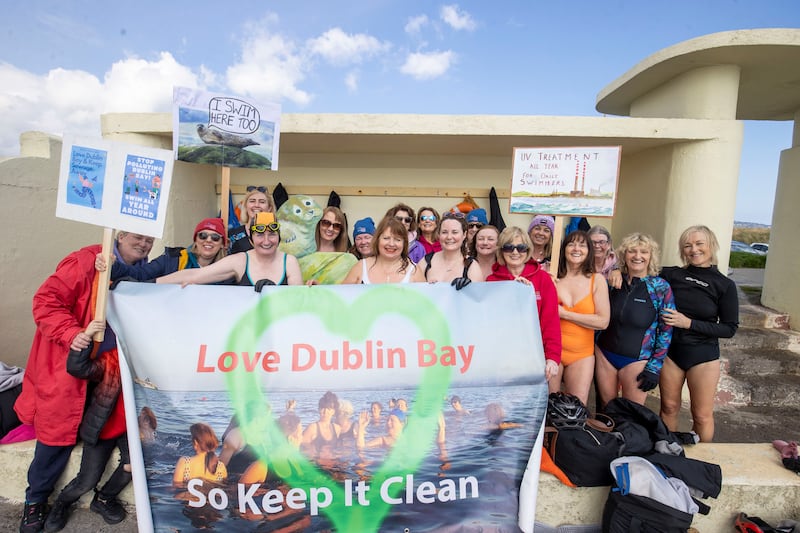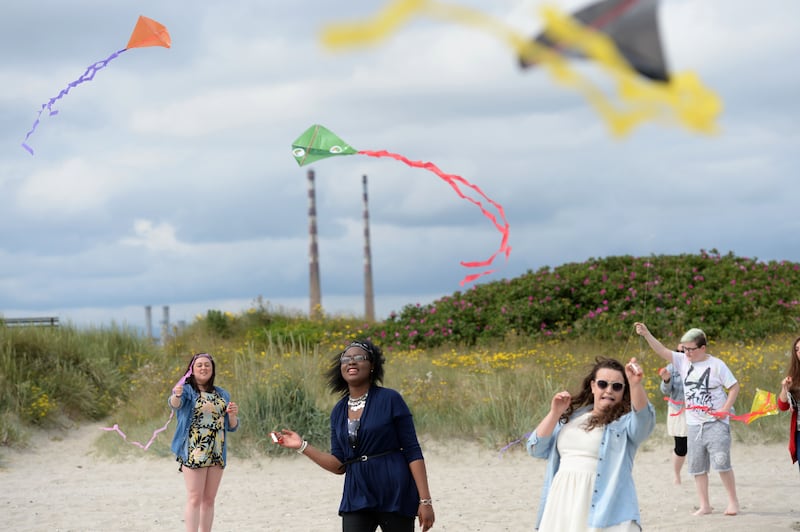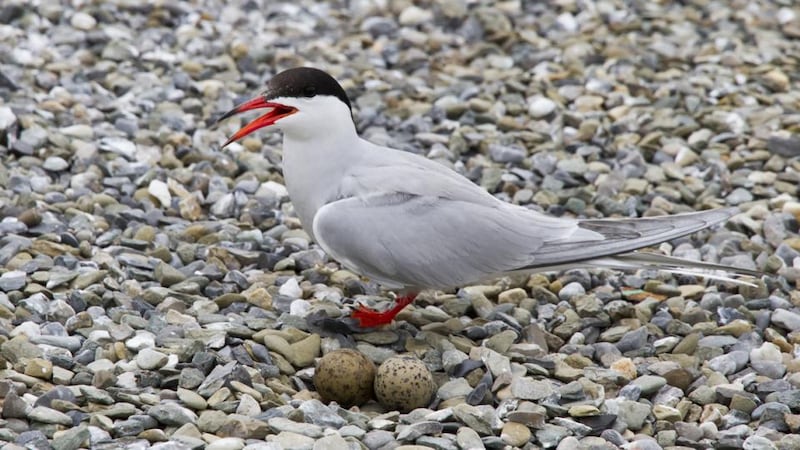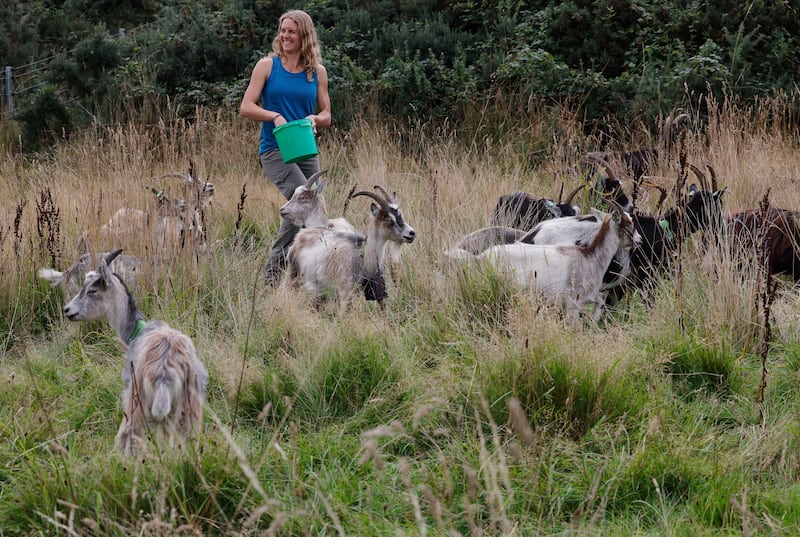Promoting a balanced relationship between people and nature is what those responsible for actively managing a biosphere must commit to. The Dublin Bay Biosphere which includes key natural sites such as Ireland’s Eye, Howth Head, North Bull Island, the Tolka Estuary and Dalkey Island is one of the few highly urbanised biospheres in the world and the only one to include a substantial area of a capital city.
Catering for the needs of a growing urban population alongside a large natural bay with protected species including brent geese, the harbour porpoise and little terns is no mean feat.
Unesco biosphere designation doesn’t bring new regulations, but the Dublin Bay Biodiversity Conservation and Research Strategy (2022-2026) aims to integrate policy actions from the three local authorities (Dublin City, Fingal and Dún Laoghaire-Rathdown) and other partners.
[ Independent review of Dublin port expansion needed, say Sandymount residentsOpens in new window ]
With heavier rainfall in recent years, reducing the levels of polluted surface water running into the Irish Sea in Dublin Bay is one of the biggest challenges, according to Roy O’Connor, senior engineer with Dublin City Council.
RM Block
“We have an old drainage system in Dublin and rainwater from roofs, roads, driveways, mixed with dog and bird faeces, pollute the seawater in Dublin Bay,” says O’Connor.
We need to try to push public developments away from large green spaces and towards areas that have ponds, reed beds and other surface water features
— Colin Gallagher, Fingal County Council
He claims – perhaps contrary to public opinion – that the wastewater treatment plant in Ringsend has a “negligible impact” on the water quality in Dublin Bay.

A recent study found that 55 per cent of the poor water samples gathered were caused by dog foul, 25 per cent by human faecal matter and about 20 per cent by bird fouling.
“Our challenge is to slow the flow of rainwater runoff entering our drainage system with nature-based solutions (such as permeable pavements, planters, roof gardens, water butts) and we need to ensure we tackle dog owner behaviours on our beaches and along our coastline, as dog foul is multiple times more polluting than human foul,” O’Connor says.
Colin Gallagher, senior engineer with Fingal County Council, says nature-based solutions will be important to clean waterways and to alleviate coastal erosion in Dublin Bay.
[ Conservation grazing yielding tangible biodiversity returnsOpens in new window ]
“We need to try to push public developments away from large green spaces and towards areas that have ponds, reed beds and other surface water features. We need systems that treat and hold water,” says Gallagher. Such measures will not only slow down watercourses – thus alleviating flooding – but they will also improve the water quality while providing amenity and biodiversity.
Mitigating the effects of sea level rise is another big concern for Dublin Bay. The coastal research group, led by Prof Iris Möller at the Department of Geography in Trinity College Dublin, is monitoring sand and silt deposits in Dublin Bay to better understand the coastal dynamics so that nature-based solutions can complement engineered defences along the coastline.
There is a seagrass restoration project in Baldoyle Bay and we need to understand the potential for restoration of seagrass in other parts of Dublin Bay
— Lorraine Bull, Dublin City Council
“The coastline is already being protected by natural features such as North Bull Island and the sand spit off the protective wall on Merrion Strand near Booterstown. These features reduce the wave energy that hits the shore. But, research is now showing that seagrass can hold this sand and silt in place through their root systems,” Möller explains.
However, seagrass beds require unpolluted waters to thrive, and Coastwatch Ireland surveyors found evidence in 2022 that some areas of seagrass in Dublin Bay were declining due to invasive seaweeds and polluted freshwater streams feeding into the sea.
Lorraine Bull, Dublin City Council biodiversity officer, says baseline data is important to monitor the seagrass beds. “There is a seagrass restoration project in Baldoyle Bay and we need to understand the potential for restoration of seagrass in other parts of Dublin Bay,” says Bull.
The new visitor access management plan for North Bull Island Nature Reserve includes signage clearly indicating parts of the island which are strictly for wildlife only, other areas where dogs can be kept on short leads and sectors where dogs can be off their leads outside of the summer bathing season.

“We have baseline surveys of the impact on ground-nesting birds in the dunes there, so the next step is to repeat these surveys to see if there are improvements. We also plan to look at the grey seal populations in Dublin Bay but really we need to develop ecosystem research to develop management strategies for different species and habitats at the same time,” Bull says.
The Dublin Port plans to build Ireland’s largest container storage facility on the Poolbeg peninsula next to Sandymount beach and the proposed Dublin Array offshore wind farm on the Kish and Bray Banks, about 10km from the coastline of Dublin, will also undoubtedly have some future impacts on the Dublin Bay Biosphere.

Oonagh Duggan from Birdwatch Ireland says while there are special protection areas (SPAs) for migratory wintering waterbirds on the shoreline, including an SPA for terns in Dublin Port, more Marine Protected Areas (MPAs) are needed in Dublin Bay.
[ Campaign aims to highlight importance and fragility of Ireland’s sand dunesOpens in new window ]
“The Fair Seas report Revitalising Our Seas highlights areas of interest for MPA in the greater Dublin Bay,” she says. She also expresses concern that wind farms are proposed in important areas for birds, such as the Kish Bank.
The Old Irish Goat Society conservation grazing project on the heathlands of Howth Head is deemed one of the successful measures to sustainably manage gorse and bracken as a wildfire prevention measure. Plans are afoot to trial similar conservation grazing methods on Killiney Hill shortly.

Dublin Bay Biosphere
Dublin Bay is one of 738 biosphere reserves around the world as designated by Unesco.
Originally the international body designated North Bull Island as a biosphere in 1981 because of its rare and internationally important habitats and wildlife. In 2015, this designation was expanded to cover the whole of Dublin Bay.
The core zone of Dublin Bay Biosphere comprises of 50km² of areas of high natural value. These include the Tolka and Baldoyle estuaries, Booterstown Marsh, Howth Head, North Bull Island, Dalkey Island and Ireland’s Eye.
The buffer zone comprises 82km² of public and private green space such as parks, greenbelts and golf courses which surround and adjoin the core zones. The transition zone comprises 173km² and forms the outer part of the Dublin Bay Biosphere, including residential areas, harbours, ports and industrial and commercial areas.
Once designated, those in charge of the biosphere must commit to actively managing the area to “promote a balanced relationship between people and nature”.
The Dublin Bay Biosphere partnership includes representatives of Dublin City Council, Fingal County Council, Dún Laoghaire-Rathdown County Council and Dublin Port Company.





















